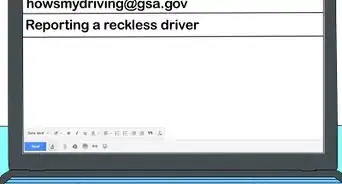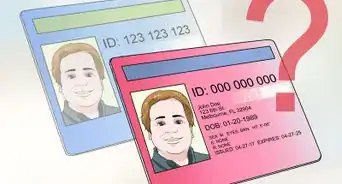This article was co-authored by Clinton M. Sandvick, JD, PhD. Clinton M. Sandvick worked as a civil litigator in California for over 7 years. He received his JD from the University of Wisconsin-Madison in 1998 and his PhD in American History from the University of Oregon in 2013.
This article has been viewed 30,503 times.
“Kidnapping” refers to the taking and transportation of a person against his or her will, or the confining or detaining of a person for an illegal purpose.[1] Kidnapping isn’t limited only to the capture of someone for ransom; it also refers to the taking of a child by a parent or family member away from a custodial parent or guardian. If you are aware or suspicious of a kidnapping, you should report it to law enforcement immediately.
Steps
Reporting a Kidnapping
-
1Contact local law enforcement. If you know or suspect that someone has been kidnapped, contact your local law enforcement agency immediately. The police or sheriff’s department will take the information you provide and investigate the situation. They can also contact the FBI or other agencies if necessary. To make a report, call 911 or contact the agency directly.
- Ask to file a missing person’s report and to have the victim’s name entered into the National Crime Information Center database.[2]
-
2Note as many details as you can. Law enforcement will wan to know as much information as you can provide about the kidnapper and victim. Be prepared to provide:
- The name of the victim;
- The name and description of anyone you might suspect as the kidnapper;
- Details about the suspect’s vehicle;
- What the victim was last seen wearing;
- Recent photographs of the victim;
- Notes about the victim’s appearance, such as height, weight, hairstyle, eye color, glasses, birthmarks, scars, tattoos, braces, and piercings.
Advertisement -
3Request an AMBER Alert. Law enforcement has discretion to issue an AMBER Alert, which uses a cross-country network of media outlets to alert the public to the kidnapping of a child. Because law enforcement has discretion to issue or not issue an alert, you will have to rely upon their judgment. Officials use the following criteria when deciding to issue an alert:[3]
- Confirmation that an abduction has occurred. Officials may hesitate to issue an alert when the reason for the child’s absence might be innocent.
- Risk of serious bodily injury or death.
- The availability of sufficient descriptive information about the victim and suspect.
- The child’s age.
- Whether or not the child’s information has been entered into the National Crime Information Center system.
Reporting a Parental Abduction
-
1Call local law enforcement. If your child has been taken from you by the child’s other parent without your consent, contact your local law enforcement agency immediately. Emotions can escalate during custody disputes between parents, and desperate parents sometimes resort to unlawfully taking the child, fleeing, and going into hiding.[4] You will need to work with law enforcement to locate the child and secure the safe return of your child. To make a report, call 911 or contact the agency directly.
- Ask to file a missing person’s report and to have the victim’s name entered into the National Crime Information Center database.[5]
- You might not want to file criminal charges against the parent before the child has been returned.[6] The threat of criminal charges might cause the parent to take more extreme action to avoid prosecution.
-
2Provide details about the child. The police will want to know as much information as you can provide about the child’s appearance, so that police or the public can more readily identify the child in public. Be prepared to provide:
- Recent photographs;
- What he or she was last seen wearing;
- Any other toys or clothing the parent or child might have taken;
- Medical conditions; and
- Other features, such as height, weight, hairstyle, eye color, glasses, birthmarks, scars, tattoos, braces, and piercings.
-
3Provide details about the parent. Police and the public will need help identifying the parent who kidnapped the child. Provide as much of the following as you can:
- Recent photographs of the parent;
- Other names or aliases the parent has used;
- A description of his or her vehicle;
- Details about your custody dispute, including any threats the parent made;
- Names and addresses of the parent’s friends and family, or other places he or she might take the child; and
- Any other identifying information you can think of.
-
4Contact friends and family. Ask the police if they want to you to refrain from calling or contacting the parent’s friends and family. If the police do not object, contact everyone who might be in contact with the parent, alert them of the situation, and ask them to call the police if the parent visits or communicates with them.
Reporting an International Parental Abduction
-
1Contact local law enforcement. Each year, thousands of children are kidnapped by a parent and removed from the United States.[7] Once a parent escapes the country with a child, it becomes much more difficult to locate the parent and return the child to the U.S. In addition, U.S. Customs and Border Protection does not screen outbound travelers, so the parent and child are unlikely to be stopped before they leave the country.
- Ask to file a missing person’s report and to have the victim’s name entered into the National Crime Information Center database.[8]
- You might not want to file criminal charges against the parent before the child has been returned.[9] The threat of criminal charges might cause the parent to take more extreme action to avoid prosecution.
-
2Tell the police of your fear of an international abduction. If you suspect that the parent might flee the country with the child, advise law enforcement of this possibility. You might be particularly suspicious of this possibility if the parent has ever discussed or threatened leaving the United States, if he or she has ties to a foreign country, or if the parent is in possession of the child’s passport. The police will contact the U.S. Customs and Border Protection’s National Targeting Center. The Targeting Center will post a bulletin alerting agencies of the possibility of an international abduction.
-
3Contact the U.S. State Department. If the parent successfully removes your child from the country, contact the U.S. State Department’s Office of Children’s Issues for help at 1-888-407-4747. The Office of Children’s Issues can do the following to aid in the return of your child:
- Assist you with the return of your child from a country that is a Hague Abduction Convention partner;
- Put you in contact with attorneys in the country where your child is located;
- Work with local and federal law enforcement; and
- Help you connect with any other organizations and government agencies that may be able to help.
Warnings
- This article is intended as legal information and does not provide legal advice. If you need legal advice, contact a licensed attorney.⧼thumbs_response⧽
References
- ↑ http://kidnapping.uslegal.com/elements-of-kidnapping/
- ↑ http://travel.state.gov/content/childabduction/en/from/local-authorities.html
- ↑ http://kidnapping.uslegal.com/elements-of-kidnapping/
- ↑ http://www.attorneys.com/child-custody/what-constitutes-parental-kidnapping/
- ↑ http://travel.state.gov/content/childabduction/en/from/local-authorities.html
- ↑ http://travel.state.gov/content/childabduction/en/from/local-authorities.html
- ↑ http://www.attorneys.com/child-custody/what-constitutes-parental-kidnapping/
- ↑ http://travel.state.gov/content/childabduction/en/from/local-authorities.html
- ↑ http://travel.state.gov/content/childabduction/en/from/local-authorities.html






































































